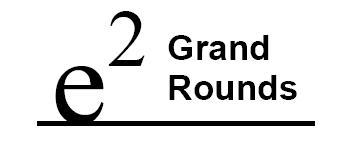Hazardous Sites & Substances
- Hazardous Sites and Substances Home
- Hazardous Waste Sites
- Topics
- Choose Safe Places Minnesota
- Environmental Exposures Grand Rounds
- Exposure and Health Investigations
- Contact us
Related Topics
- Water Contaminants and Your Health
- Cancer and the Environment
- Fish Consumption Guidance
- Children's Environmental Health
- Air Quality by Topic
- MN Public Health Data Access Portal
Environmental Health Division
Contact Info
Environmental Exposure Grand Rounds

A shared dialogue among Occupational and Environmental Medicine Physicians, the Minnesota Regional Poison Center, and the Minnesota Department of Health.
Sign up for Email Updates to receive information about events.
Upcoming seminar
Don't get rattled – uncoiling the data behind snakebites
Nicholas Hoffmann, DO; Aesha Shah, MD; Amelia Krug, MD; Will Bleifuss, MD
Snake envenomations remain a notable cause of morbidity in the United States, though mortality is rare. Worldwide, the prevalence, morbidity and mortality are oftentimes more significant, particularly in low-resource settings. This presentation will discuss envenomations in the United States, both common and uncommon, the pharmacology and application of antivenom, and the global impact and burden of snakebites.
Meeting ID: 292 236 729 084 6 | Passcode: yf2TA7du
Find a local number | Phone conference ID: 690 562 339#
About environmental exposure grand rounds
The purpose of Environmental Exposure Grand Rounds is to foster communication and multidisciplinary collaboration between medical and public health specialties through presentations and discussions that explore impact of environmental exposures on health.
CMEs are not offered for this EEGR.
We are looking into reinstituting them.
Continuing Medical Education (CME) credits have been offered for all previous Environmental Exposure Grand Rounds through Health Partners. Contact us at health.hazard@state.mn.us for more information.
We have a list of past seminars from the last three years. Information available includes the date, topic, speaker(s), and abstract.
Since 2007, MDH has hosted the Environmental Exposure Grand Rounds. For a complete list of presentations, please contact us through health.hazard@state.mn.us.
Suggestions for topics are welcome. Please send your suggestions to health.hazard@state.mn.us.
Comments or questions? Please contact us at 651-201-4897 or health.hazard@state.mn.us.